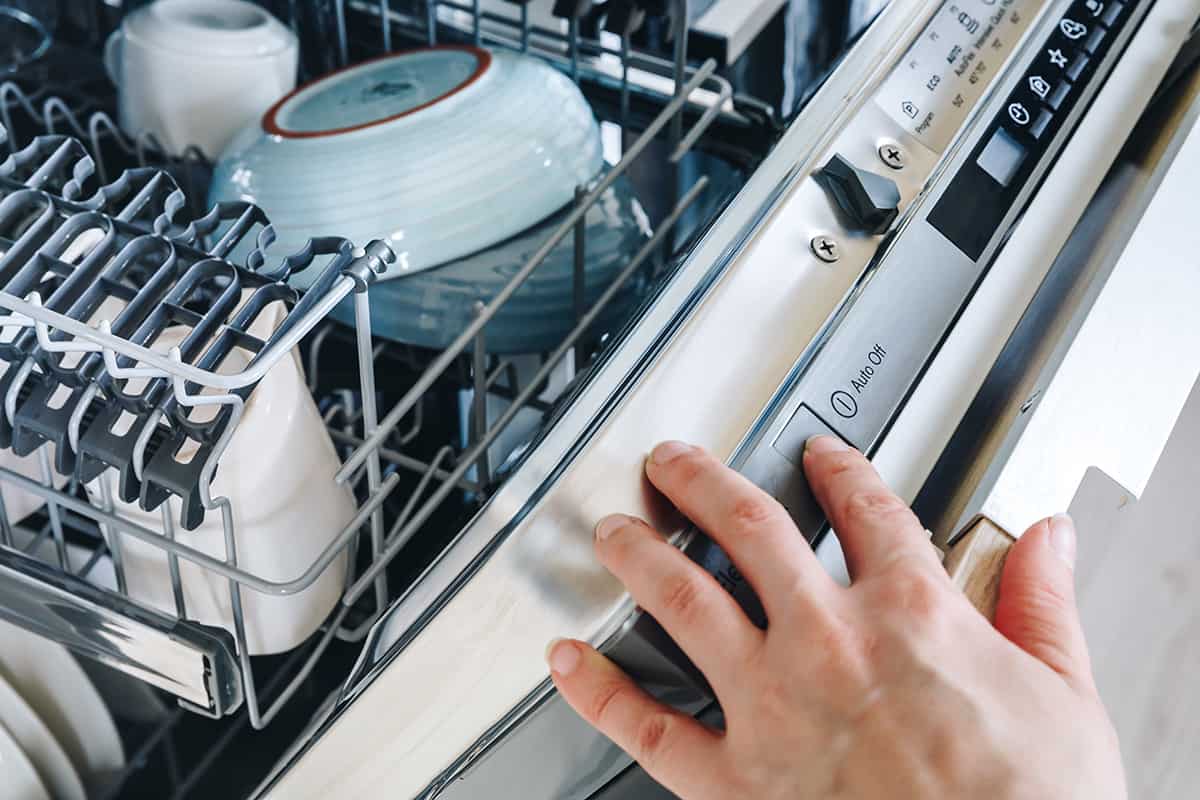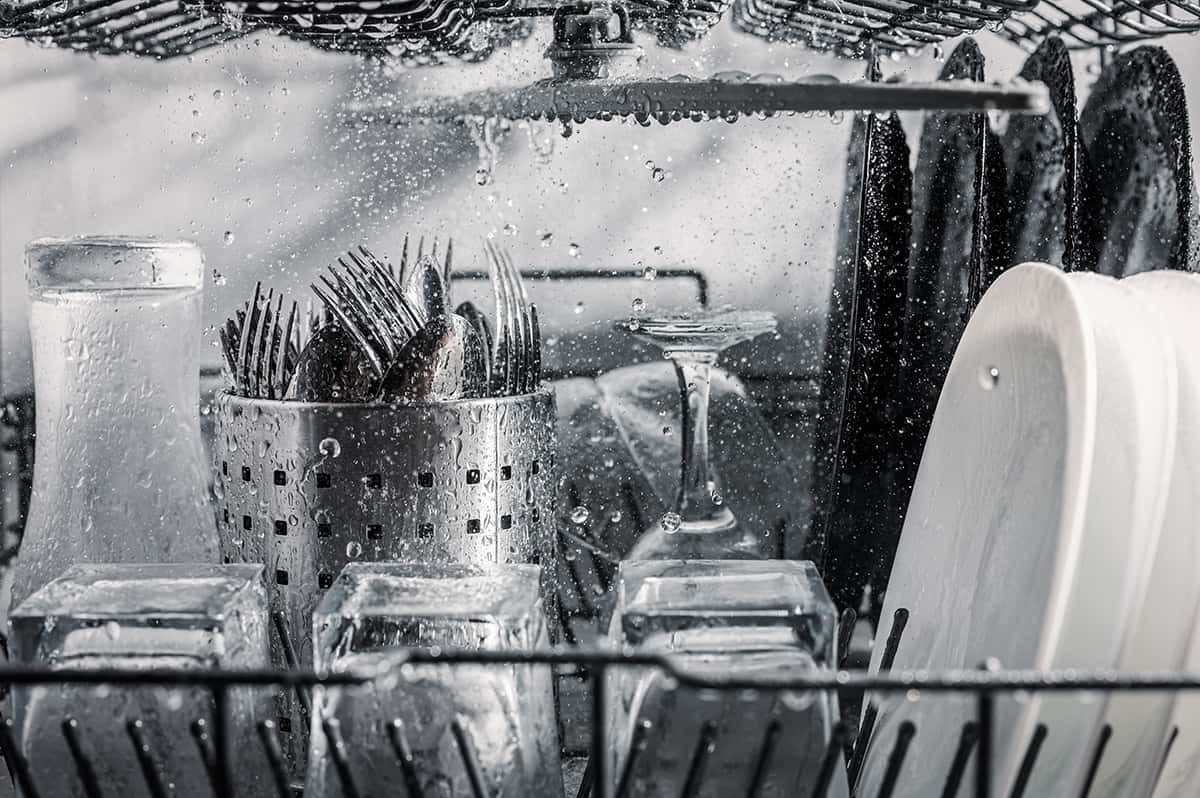If you have a modern dishwasher and wonder why it takes longer to complete the cycle, you are not alone. Unlike old dishwasher models, modern designs come with many added features, but their cycles run for a long time.
With too many cycles and programs, one wonders what is normal or when you need to be concerned for an extra-long run.
How long it takes a dishwasher to run depends on your cycle. A normal circle dishwasher can take 1.5 to 2 hours, but each model has its own specific time for each cycle.
A few other factors like wrong cycle settings, a mineral buildup on the dishwasher’s parts, or a clog in drainage can also cause the dishwasher to run longer than usual. A strict cleaning routine can help you keep the appliance in pristine condition for long.
This article will discuss the ideal time your dishwasher should run, different cycles, how long each cycle can take, and when you need to be concerned about an extended cycle.
How Long is the Normal Dishwashing Cycle?

Your dishwasher is probably one of your kitchen’s most used and convenient appliances. Cleaning dishes become a breeze even if you have served a feast.
Still, one feels concerned with the long-running cycles and all the extra energy consumption that it may lead to. The good news is that a long-running dishwasher cycle does not necessarily mean your dishwasher is not water or energy efficient. Before we dig deep, let’s understand how long a process should run.
Each model of dishwasher or brand has its specific timing for each cycle. You can read about it in the given manual. On a basic level, a normal dishwashing cycle takes two hours. Still, It can take more or less depending on too many factors, for example, the wash cycle you have chosen, the age of your dishwasher, its condition, and the specific model of the dishwasher as well.
Let’s take a look at the basic Dishwashing Cycles and their running time
On the very basic level, all dishwashers come with light, normal and heavy options. These settings are suitable for day-to-day dishwashing needs, but most modern dishwashers feature more cycles and programs for specific needs, and their running time varies. Here are some common cycles in modern dishwashers
Rinse Cycle
A rinse cycle does not use detergent or soap to clean dishes, and it simply splashes water on dishes to clean off the food residues. You can use this cycle for new dishes that do not require deep cleaning.
Or you can also keep loading the dishwasher and put it on hold before the heavy load. It takes 10 to 15 minutes to run the cycle.
Quick Wash
It takes an hour or even less in some models. The temperature and pressure setting is high. Before a quick wash cycle, you need to remove the hard particles or any food residues from the dishes.
Smart Wash or Auto
This feature is available in the latest dishwashers. If you choose the auto setting, the dishwasher has sensors to decide how dirty the dishes are. It sets the time, temperature, and pressure accordingly.
Normal Cycle
When not sure which cycle to choose, you probably hit the normal cycle setting. A normal cycle can take up to one and a half hours. However, each model has its own standard time.
Eco
Eco is an eco-friendly alternative to a normal cycle. It is designed to save energy and water. The cycle duration is longer than normal, making you believe it is consuming more energy, but on the contrary, it is a more energy-efficient cycle. An echo wash program can run a minimum of a 3-hour long cycle.
Heavy Duty Cycle
That is for pans and pots that need deep cleaning, and it’s the longest-running cycle. The cycle requires more power and time, and the running time can extend up to 3-4 hours, though, depending on your specific model.
Anti-bacterial Cycle
The cycle was added to meet the standard of the National Sanitation Foundation, and it removes bacteria from your dishes by raising the temperature of the water to 150 degrees.
Delicate Cycle
This cycle is used to rinse your delicate items like glass or chinaware. The cycle uses lower water temperature and less pressure to protect your delicate dishes.
Besides these basic cycles, modern dishwashers feature options like delay wash, half load, or a delicate cycle.
Half Load
Half-load cycle means the dishwasher is not fully loaded, and the purpose is to save time and water. However, the half-load cycle is replaced with load size detection. Load size detection automatically allows the machine to adjust time and water for smaller loads.
Heat Dry
Some modern dishwashers offer you to dry your dishes well with heat. However, it’s not necessary for everyday washing. A heat dry is an excellent option if you are too careful about water residues ruining your expensive cutlery, but is it really necessary? You can always put the dishes on a drying rack and leave them to air dry. Adding a Heat dry program may add up to 30 more minutes to the cycle.
Do New Dishwashers Take Longer to Complete Cycle than Older Ones?
New owners are concerned about a common question, especially if you have been using an older dishwasher and recently upgraded your dishwasher.
We usually expect new and modern appliances to be fast and energy-efficient. To many of us, a longer cycle can make you think that your dishwasher is spiking up your electricity bill. Now that’s misleading as modern dishwashers claim to use less water and are starred as energy efficient.
Modern dishwashers take longer than the older ones, but that does not necessarily mean they consume more energy and water.
The US-based energy star program issued standards that require dishwashers to use less water and energy. So the challenge was to reduce the water usage and energy consumption while still cleaning the dishes perfectly. The manufacturers then increase the run time and improve the design. They spray less water but use other means to refine spray.
This is how Boche explains in its Energy Start Draft, “Cleaning performance can be increased and energy usage can be reduced, with longer run times.”
Now how they do it is probably a trade secret, but it can be the type of spray, the position of racks, or some other similar factors.
Why is My Dishwasher Running Longer Than Usual?

As we said, each dishwasher brand or model has its own specific time for each cycle. But if you notice your dishwasher is taking longer than usual, there are many possible explanations.
A clog in the drainage system
If a dishwasher takes longer than usual, it’s probably due to some problem with its drainage system. Sometimes, a clog in its self-filtering system makes the water drain slowly, and thus, a cycle takes longer than usual.
Mineral Deposits
Over the period, mineral deposits and limescale can build up on your heating elements, filters, sensors, or drainage system. Especially if you live in an area with hard water, the performance of your appliances can be affected due to mineral deposits on different parts of the dishwasher. It can increase its running time as the water is blocked from running efficiently.
Water Temperature
A dishwasher is designed to use warm water to clean dishes. The water temperature can range from 120 to 140 degrees F. If the water temperature is lower, it can take some minutes to heat water.
Heating Elements
If your dishwasher takes longer than usual to heat water, there can be problems with its heating elements. As mentioned above, the mineral deposits on heating elements can also increase the time consumption.
Choosing the Wrong Cycle
A common issue that can increase your dishwasher’s running time is the wrong set of cycles. Modern dishwashers come with many bells and whistles. These added features can increase the duration of the cycle. Features like an anti-bacterial cycle or heat dry add time to the normal run cycle of your dishwasher.
What you can do to ensure the running cycle is not stretched too long?
Here are a few tips that can keep your dishwasher in an upscale condition:
- If you notice the run cycle is taking longer than usual, check the water drainage system and make sure the water is not clogged. You can disconnect the hose and check if some debris or leftover food residues are blocking the water.
- Clean the water filter regularly. You can use a brush or sponge to clean it properly.
- Don’t leave any hard water traces or mineral buildup in key parts like filters, spray nozzles or sensors. You can run an empty dishwasher with hot water and a bowl of vinegar from time to time to remove these traces.
- Make sure you supply warm water to the dishwasher. You can set your water heater to 120 degrees F.
- Read the manual to understand the featured cycles and use any special feature only if you need it. You don’t need to add extra heat or dry heat options daily.
- Go through your dishwasher manual to understand the average time for each cycle.
- Follow a strict deep cleaning routine with your dishwasher at least once a month.
Final Words
Modern dishwashers take longer than their old models, and it can be concerning for the consumers. However, a long-running cycle does not necessarily mean that dishwasher consumes more water and energy. Following a strict cleaning routine can ensure your appliance’s safety, good performance, and long life.






